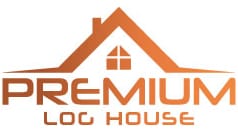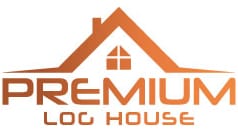Plumbing plays a vital role in ensuring a comfortable and functional living space in log cabin homes. With the right approach and professional guidance, you can create a reliable and efficient plumbing system that caters to your needs. In this guide, we will explore various plumbing options and installation methods for log cabin homes.
1. Selecting the Right Plumbing System
When planning your log cabin plumbing system, consider factors such as local building codes, environmental impact, and your budget. There are various types of plumbing systems to choose from, each with its own advantages and limitations.
a. Conventional Plumbing
Conventional plumbing systems use copper or PVC pipes and are widely used in traditional homes. This type of system is also suitable for log cabin homes, as it provides a reliable and durable option for water supply and waste management.
b. PEX Plumbing
PEX (cross-linked polyethylene) plumbing is a flexible and cost-effective alternative to traditional plumbing systems. It is easy to install and can be routed through walls and floors without the need for extensive drilling or cutting. PEX plumbing is also less prone to freezing and bursting compared to copper or PVC pipes.
2. Planning the Plumbing Layout
Proper planning is crucial for a successful log cabin plumbing installation. This involves coordinating with a professional plumber and considering the following factors:
- Location of water supply and sewer lines
- Number and location of bathrooms, kitchens, and utility rooms
- Placement of fixtures and appliances
- Local building codes and permit requirements
When planning your plumbing layout, consider incorporating efficient water management strategies, such as greywater recycling or rainwater harvesting systems.
3. Installing Plumbing in a Log Cabin
Once you have chosen a suitable plumbing system and finalized the layout, it’s time to proceed with the installation process. This involves several steps:
a. Preparing the Logs
When building your log cabin, ensure that the logs are appropriately treated and prepared for plumbing installation. This may involve drilling holes for pipes, creating channels for waste lines, and sealing gaps to prevent water infiltration.
b. Running Pipes
Work with a professional plumber to run pipes through your log cabin’s walls, floors, and ceilings. It’s essential to ensure proper pipe support and insulation to prevent freezing and water damage.
c. Connecting Fixtures and Appliances
After running the pipes, connect fixtures and appliances, such as sinks, showers, toilets, and washing machines, to the plumbing system.
d. Testing the System
Before completing the installation, test the plumbing system for leaks and proper functionality. This ensures a reliable and efficient water management system for your log cabin home.
FAQs
- Q: Can I install plumbing in an existing log cabin?
- A: Yes, it is possible to retrofit a plumbing system in an existing log cabin. However, this process may involve significant modifications to the cabin’s structure and may require professional assistance.
- Q: Are there any eco-friendly plumbing options for log cabins?
- A: Yes, you can incorporate eco-friendly plumbing solutions, such as low-flow fixtures, greywater recycling systems, and rainwater harvesting systems, to reduce water consumption and promote sustainable living in your log cabin home.
- Q: How do I insulate my log cabin’s plumbing to prevent freezing?
- A: Proper insulation is crucial to prevent freezing and potential damage to your plumbing system. Insulate pipes using foam pipe insulation or heat tape, and consider adding insulation to walls, floors, and ceilings to maintain a consistent indoor temperature.
Conclusion
Plumbing is an essential aspect of any comfortable and functional log cabin home. By selecting the right plumbing system, planning the layout, and working with a professional plumber, you can ensure efficient water management and a comfortable living space in your log cabin home. Consider incorporating eco-friendly plumbing solutions and maximizing insulation to create a sustainable and energy-efficient living environment.

